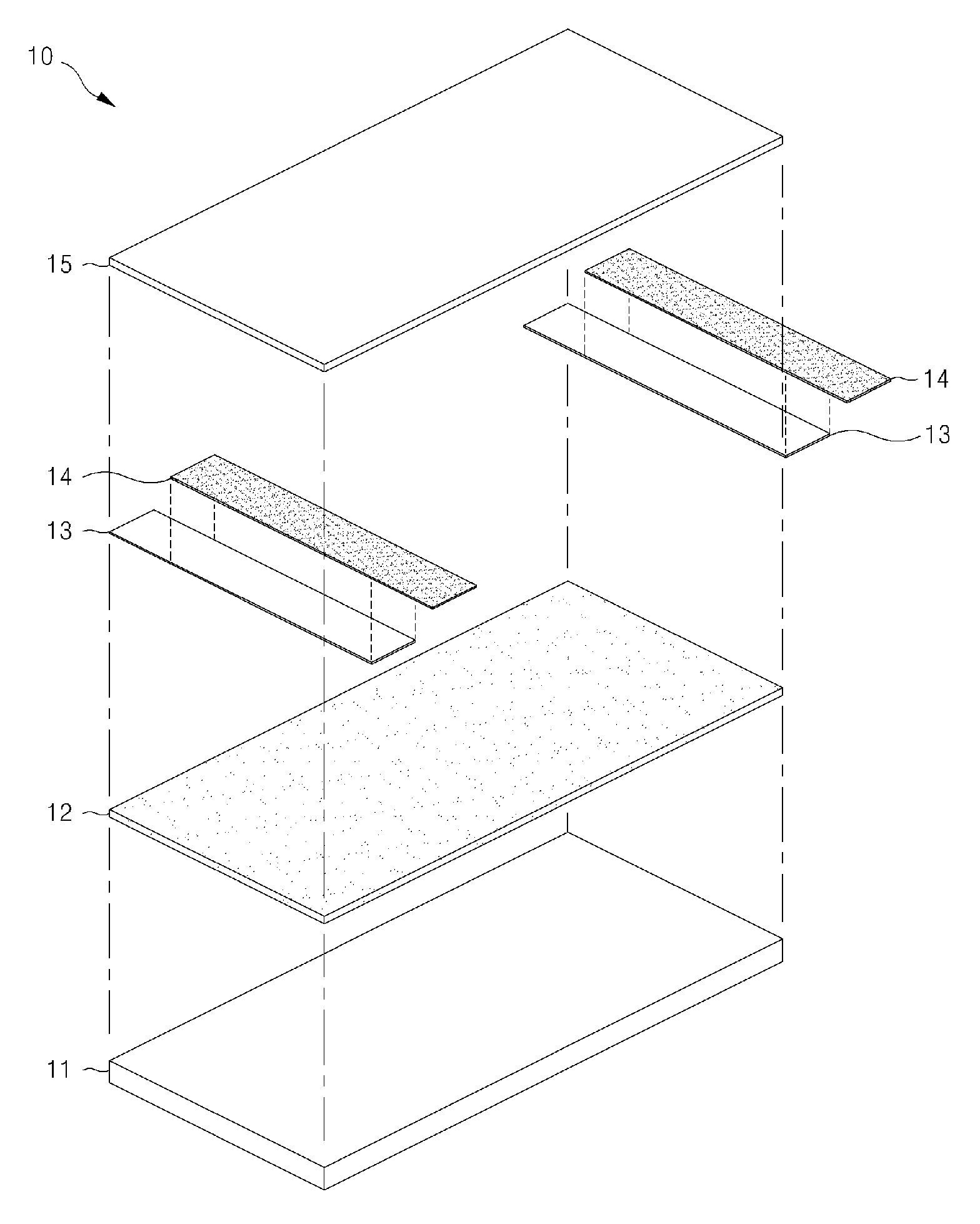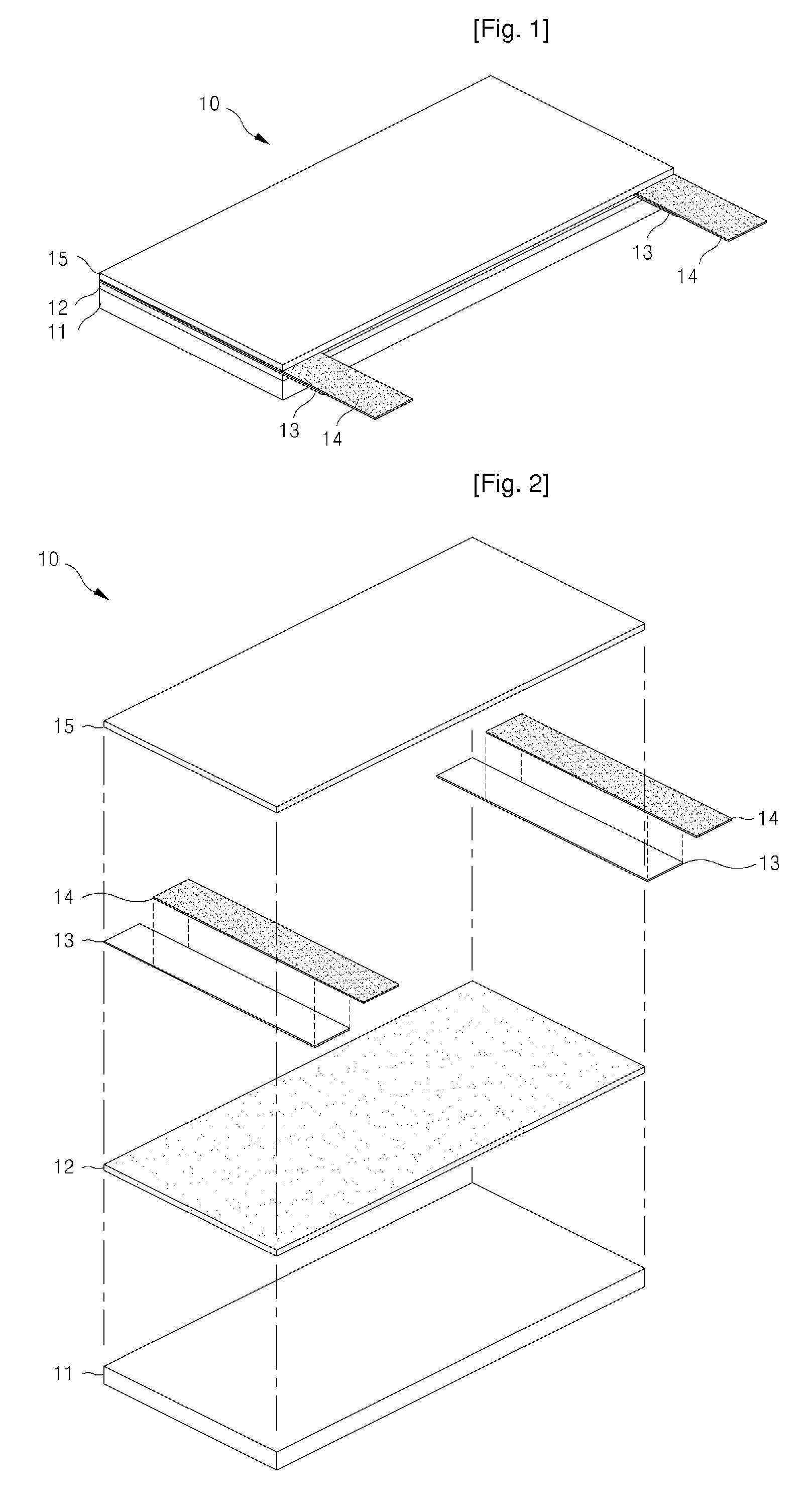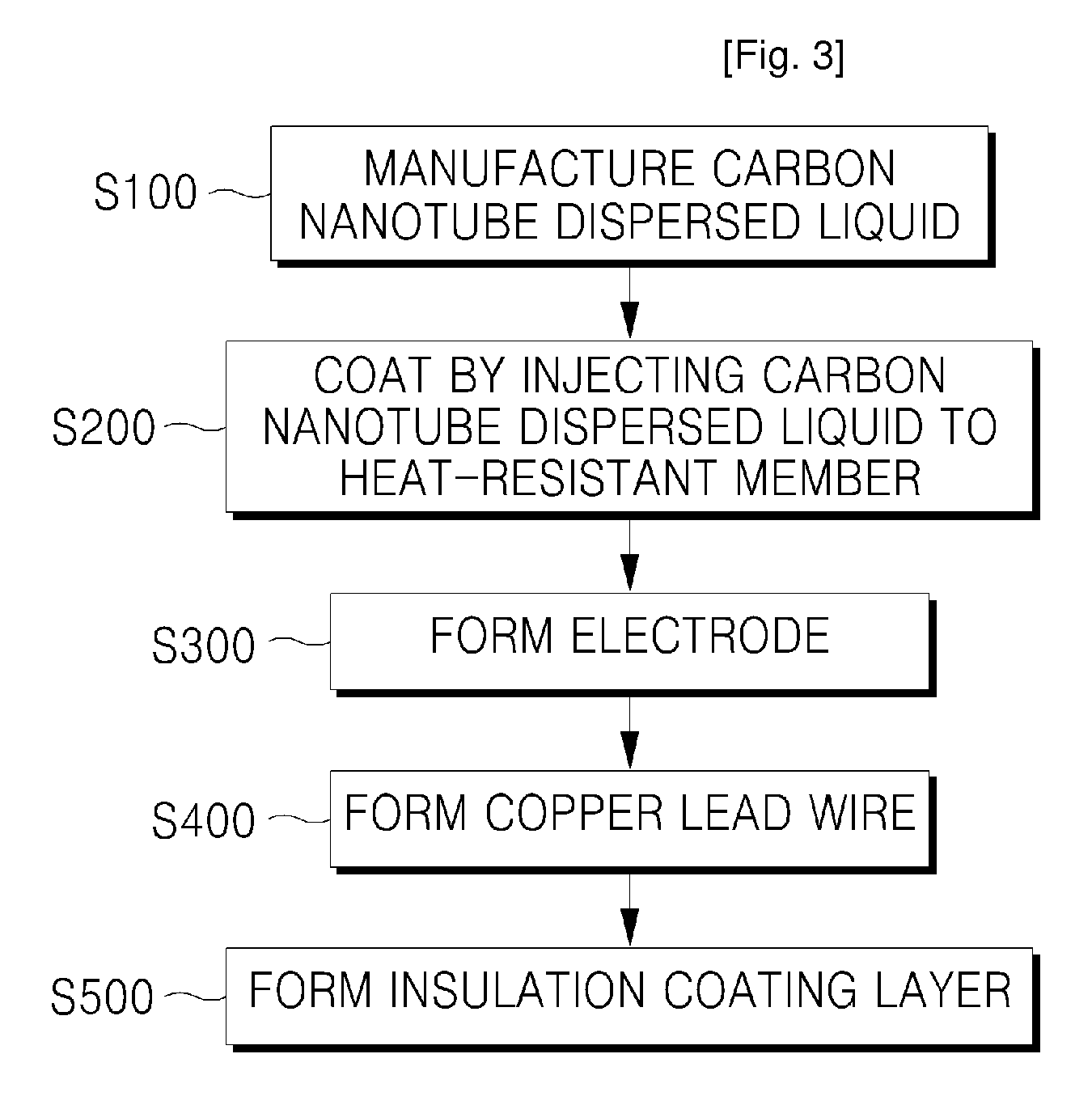Heating element using carbon NANO tube
a technology of carbon nanotubes and heating elements, applied in the direction of heating element materials, ohmic resistance heating, electrical appliances, etc., can solve the problems of reducing the life of equipment, difficult control of temperature, and increasing so as to reduce the overall manufacturing time, reduce the cost of equipment investment, and improve the effect of heating efficiency
- Summary
- Abstract
- Description
- Claims
- Application Information
AI Technical Summary
Benefits of technology
Problems solved by technology
Method used
Image
Examples
embodiment 1
[0045]A ceramic substrate is used as the heat-resistant member 11 and water-dispersive carbon nanotube is coated in a spray method. When the surface resistance is set to 946Ω and applied voltage is set to 132V and 220V, the heating temperatures of the surface measured in these conditions are respectively 282° C. and 409° C.
embodiment 2
[0046]A ceramic substrate is used as the heat-resistant member 11 and water-dispersive carbon nanotube is coated in a spray method. When the surface resistance is set to 1129Ω and applied voltage is set to 132V and 220V, the heating temperatures of the surface measured in these conditions are respectively 210° C. and 328° C.
embodiment 3
[0047]A ceramic substrate is used as the heat-resistant member 11 and water-dispersive carbon nanotube is coated in a spray method. When the surface resistance is set to 1274Ω and applied voltage is set to 132V and 220V, the heating temperatures of the surface measured in these conditions are respectively 192° C. and 298° C.
PUM
| Property | Measurement | Unit |
|---|---|---|
| temperatures | aaaaa | aaaaa |
| temperature | aaaaa | aaaaa |
| temperature | aaaaa | aaaaa |
Abstract
Description
Claims
Application Information
 Login to View More
Login to View More - R&D
- Intellectual Property
- Life Sciences
- Materials
- Tech Scout
- Unparalleled Data Quality
- Higher Quality Content
- 60% Fewer Hallucinations
Browse by: Latest US Patents, China's latest patents, Technical Efficacy Thesaurus, Application Domain, Technology Topic, Popular Technical Reports.
© 2025 PatSnap. All rights reserved.Legal|Privacy policy|Modern Slavery Act Transparency Statement|Sitemap|About US| Contact US: help@patsnap.com



